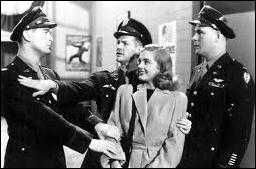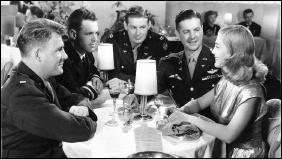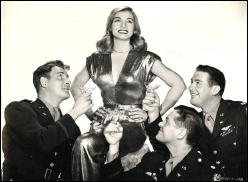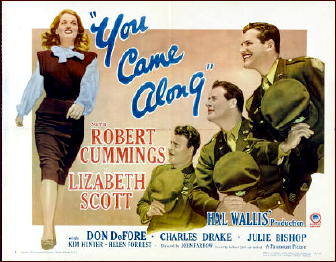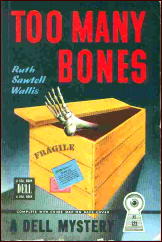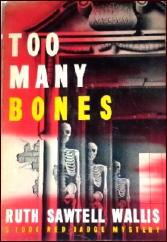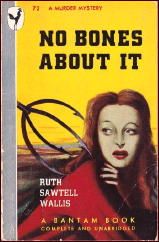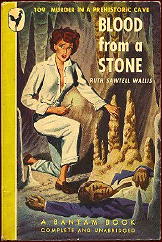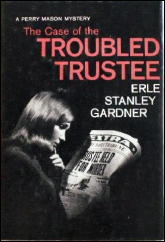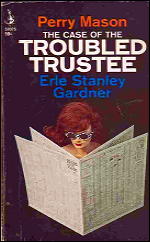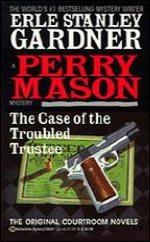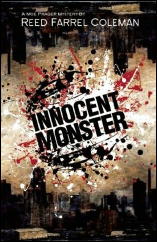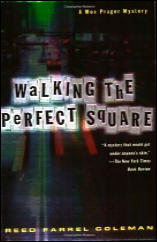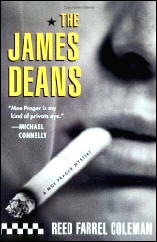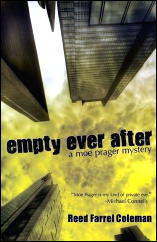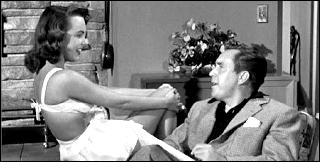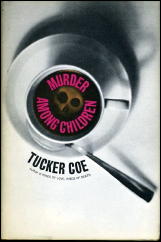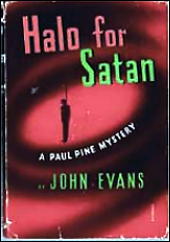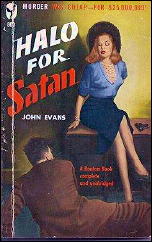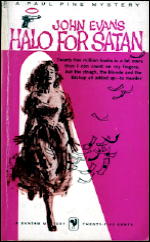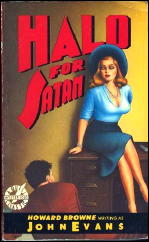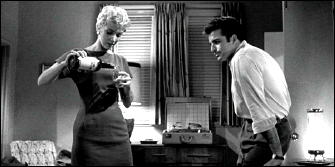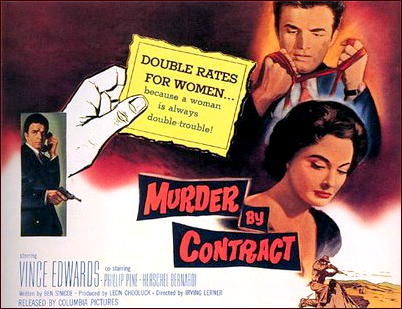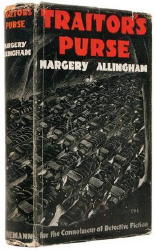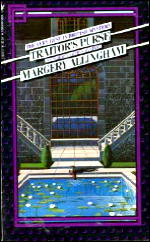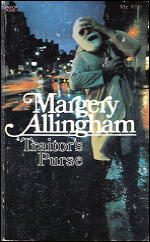A TV Series Review by Michael Shonk
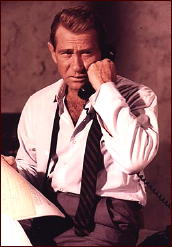
THE OUTSIDER. NBC. 1968-1969. 26 episodes at 60 min each. Universal and Public Arts (* Executive Producer Roy Huggins). Cast: Darren McGavin as David Ross. Theme by Pete Rugalo. Created by John Thomas James (Roy Huggins). Produced by Gene Levitt. (*) Huggins had nothing to do with the series but owned Public Arts so his credit was with the Public Arts Production screen credit. Previously on this blog: A review of the TV Movie pilot The Outsider.
The Outsider tried hard to be loyal to its noir roots but it was born at the wrong time. From Broadcasting (8-19-68) article entitled “1968-69: The Non Violent Seasonâ€:
“Actually no show has had a rougher time of it in the anti-violence climate than the Universal Television–Public Arts Production of The Outsider. It was bought by the network and in production long before the [Bobby] Kennedy assassination.â€
It was August (first episode aired September 18th) and fifteen episodes had been completed, but NBC was still demanding changes. Series producer Gene Levitt commented that they were still redubbing the first eight episodes and had been doing so every day for the last seven weeks.
The article sites an example of the changes. In episode “Love Is Under L,†the original finished scene had the bad guy attack Ross with a knife. Ross flips the guy over a bar counter. The guy rises from behind the bar ready to continue the fight when he realizes his knife is in his chest. He pulls out the knife and dies. The edited scene that made it to the air has the man never rising from behind the bar and Ross’ reaction telling the audience the bad guy was dead.
The first episode was a hit in New York easily winning its Wednesday 10pm time slot with a 43 share. But the reaction was best summed up by Chicago Daily News Dean Gysel, “It is one thing to avoid violence … another to avoid drama.†(Broadcasting, 9/23/68)
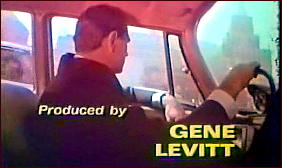
While not as well remembered as Roy Huggins, showrunner Gene Levitt also had a long successful career. In 1947 he adapted Raymond Chandler’s stories for the radio series Philip Marlowe starring Gerald Mohr. Most famous for creating Fantasy Island, Levitt’s credits include such shows as Front Page Detective, Maverick, Combat, Alias Smith & Jones, Barnaby Jones, and Hawaii Five-O.
I have recently watched the following episodes:
“One Long-Stemmed American Beauty.†Written by Shirl Hendryx. Directed by Alexander Singer.
Noir tale of life in Hollywood as Ross investigates the death of a former dancer turned bit part player and gigolo. Guest Cast: Judith McConnell as Dorothy, Marie Windsor as Leslie.
“I Can’t Hear You Scream.†Written by Edward J. Lakso. Directed by Alexander Singer.
Noir with a heavy mix of 60’s social injustice has Ross on his own trying to save a black small time criminal from execution. The black cop does not think the criminal is worth saving, the thief’s mother does not trust Ross because he is white, the childhood sweetheart refuses to help, and the current girlfriend is more worried about her Hollywood career. Guest Cast: James Edward as Lt. Wagner, Ena Hartman as Eleanor.
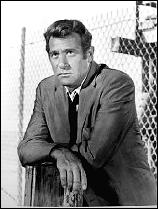
“Tell It Like It Was…And You’re Dead.†Written by Bernard C. Schoefeld. Directed by Alexander Singer.
A lonely forgotten star of burlesque decides to write her memoir. When someone tries to kill her, she hires Ross to find out who wants her silenced. Ross falls deeply in love with the memoir’s ghostwriter (who survives and apparently never mentioned again). Noirish soap opera. Guest Cast: Whitney Blake as Judy, Jackie Coogan as Rusty.
“The Girl From Missouri.†Written by Edward J. Lakso. Directed by Richard Benedict.
Naïve girl is looking for her brother in the evil big city L.A. She plans to reunite him with their dying father back in Missouri. Less noir and more like a Mannix episode. Guest Cast: Mariette Hartley as Mary, Jaye P. Morgan as Ginny.
“A Bowl of Cherries.†Written by Bob and Esther Mitchell. Directed by Michael Caffey.
A friend from prison asks Ross to check on his son. The young hotheaded Latino has fallen in love with his white boss’ son girlfriend. Pure 60’s social injustice plot with noir ending illustrating how close 50’s noir and 60’s social injustice stories were in theme. Guest Cast: John Marley as Jason, Tom Skerritt as Arnie.
“Through a Stained Glass Window.†Written by Ben Masselink. Directed by Charles S. Dubin.
The next to last episode of the series was a comedy. The thief who stole and hid $250,000 is finally out of prison. Ross is hired by the victim to follow the thief and get his money back. Ross is not alone as others have the same idea. On the way Ross encounters a series of eccentric characters right out of an episode of The Avengers. Guest Cast: Ruth McDevitt as Alice, Walter Burke as Fox.
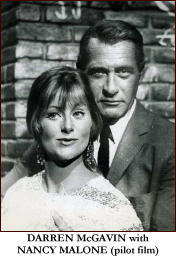
“48-Hr. Mile.†TV movie featuring episodes: “Flipside†and “Service For One.†Produced by Harry Tatelman and Gene Levitt. Written by Rita Lakin & Rick Edelstein and Don Carpenter. Directed by Gene Levitt.
“Flipsideâ€: Janet, a shy prudish woman wants Ross to find and stop her out of control sister Diane. Average psychological drama with a better than average cast. Guest Cast: Carrie Snodgrass as Janet, Michael Strong as Dr. Gaynor.
“Service For Oneâ€: Ross is hired to serve a subpoena to reclusive billionaire Bernard Christie. Ross encounters a woman who has fallen in love with Christie’s alter-ego Harry, and a writer who was ruined by the ruthless rich man. Nice noir ending. Guest Cast: William Windom as Christie, Kathie Browne as Amy.
The two episodes are clumsily linked with added storyline of Ross thinking Diane was another girlfriend of Christie.
“Anatomy of a Crime.†TV Movie featuring episodes “Tell It Like It Was…And You’re Deadâ€(see above) and “There Was A Little Girl.†Written by Bernard C. Schoenfeld and Kay Lenard & Jess Carneol. Directed by Alexander Singer and John Peyser.
“There was a Little Girlâ€: A woman claims her step-daughter is really a rich man’s daughter who was kidnapped 12 years ago and never found. Guest Cast: Joan Blondell as Sadie, Simon Scott as Harrington.
The two episodes were awkwardly joined by a voice over (Ross) explaining the two different clients hired Ross on the same day.
From the episodes I have seen, it is apparent the writers were still exploring who David Ross was. Should he fall in love every week or be a detached professional? Is he an outsider with no friends and live in a dump of an apartment or does he have old friends, wear suit and tie, and live in a typical PI office (no secretary)?
McGavin had his limitations. While he made loser Ross admirable, McGavin was unbelievable as Ross the ladies man.
Levitt and the writers would have fixed those problems with time. But the problem no amount of time could fix was NBC, a network so scared it reportedly didn’t want them to show Ross with a gun. And something had to take up all that time the network edited out of the shows.
Fans interested in what Los Angeles looked like in 1967 will be thrilled with the many long drives through various sections of my favorite city. According to Broadcasting (8/19/69), when the writers failed to find enough filler to make the hour time slot, NBC added Public Service ads. There is nothing better for the pace and tension of a dramatic story than long car rides and more commericals.
In typical noir fashion, The Outsider was doomed to fail.
Recommended website:
Darren McGavin & Kathie Browne McGavin’s Authorized website:
http://www.darrenmcgavin.net/the_outsider.htm
